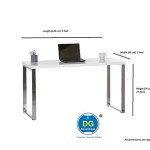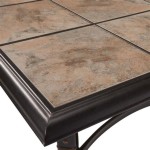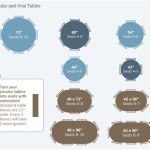Phantom Retractable Screen Repair: A Comprehensive Guide
Phantom retractable screens offer an elegant and functional solution for expanding living spaces and enjoying the outdoors without the drawbacks of insects and harsh sunlight. These screens seamlessly retract when not needed, preserving the aesthetic appeal of a home and maximizing views. However, like any mechanical system exposed to varying environmental conditions, Phantom screens are susceptible to wear and tear, requiring occasional maintenance and repair. Understanding common issues, available repair methods, and preventative measures is crucial for maintaining the longevity and optimal performance of these valuable home additions.
This article provides a comprehensive guide to understanding Phantom retractable screen repair. It covers various aspects of diagnosis, repair techniques, part replacements, and preventative care, enabling homeowners and professionals to effectively address potential problems and ensure the sustained functionality of their Phantom screens.
Diagnosing Common Phantom Screen Issues
Accurate diagnosis is the cornerstone of any successful repair. Phantom retractable screens can experience a variety of problems, stemming from everyday use, environmental factors, or component degradation. Identifying the root cause of the issue is critical before attempting any repair procedures. Common problems include:
Screen Tears or Damage: This is perhaps the most frequent issue. Tears can result from accidental impact, pet scratches, or simply the aging and weakening of the screen mesh due to prolonged exposure to sunlight and weather elements. The size and location of the tear will influence the repair method, with small tears potentially repairable while larger ones may necessitate screen replacement.
Retraction Problems: Difficulty in retracting or extending the screen smoothly often indicates a problem with the tension system, the motor (in motorized units), or the accumulation of dirt and debris within the housing or tracks. A thorough inspection of these components is necessary to pinpoint the cause. The screen may retract unevenly, stop midway, or not retract at all.
Mechanism Jamming: Obstructions within the screen housing or tracks can cause the retraction mechanism to jam. This can be due to debris like leaves, insects, or small objects that have become lodged in the system. Sometimes, corrosion or a lack of lubrication can also contribute to jamming.
Motor Malfunctions (Motorized Units): Motorized Phantom screens rely on an electric motor to retract and extend the screen. Issues with the motor itself, such as a faulty capacitor, wiring problems, or a burned-out motor, can prevent the screen from operating correctly. Power supply problems or remote control issues should also be considered.
Track Obstructions: The screen glides along tracks during retraction and extension. These tracks can accumulate dirt, debris, and even become misaligned, leading to friction and difficulty in operation. Proper cleaning and alignment are essential for smooth screen movement.
Tension System Problems: The tension system maintains the screen's tautness and ensures smooth retraction. Problems with the springs, cords, or other components of the tension system can lead to sagging screens, uneven retraction, or difficulty in locking the screen in place. A broken spring or a frayed cord requires immediate attention.
Essential Repair Techniques and Part Replacements
Once the problem has been accurately diagnosed, the next step is to determine the appropriate repair technique. The specific method will depend on the nature and severity of the issue. Here are some common repair techniques and part replacements:
Screen Patching: Small tears in the screen mesh can often be repaired with a patch. Specialized screen repair patches are available in various materials and colors to match the existing screen. The patching process involves cleaning the area around the tear, applying adhesive to the patch, and carefully adhering it to the screen. For a more durable repair, heat-activated patches can be used with a heat gun or soldering iron (exercising extreme caution to avoid damaging the screen further).
Screen Replacement: For larger tears or significant damage, replacing the entire screen mesh is often the most effective solution. This involves carefully removing the old screen from the roller mechanism, measuring and cutting a new screen to the correct size, and securing it to the roller using specialized tools and techniques. The tension must be properly adjusted to ensure smooth retraction.
Track Cleaning and Lubrication: Cleaning the tracks is crucial for smooth screen operation. Use a soft brush or vacuum cleaner to remove dirt and debris from the tracks. Apply a silicone-based lubricant to the tracks to reduce friction and ensure smooth gliding. Avoid using oil-based lubricants, as they can attract dirt and worsen the problem over time.
Mechanism Cleaning and Lubrication: Clean the internal mechanism of the screen housing with compressed air to remove dust and debris. Lubricate moving parts with a silicone-based lubricant. This can help to prevent jamming and ensure smooth operation. Be careful not to over-lubricate, as this can also attract dirt.
Tension System Adjustment and Repair: Adjusting the tension is crucial for proper screen retraction. Refer to the manufacturer's instructions for specific tension adjustment procedures. If a spring is broken or a cord is frayed, it needs to be replaced. Replacement parts can often be obtained from the manufacturer or a specialized screen repair company.
Motor Repair or Replacement (Motorized Units): Motor repair can be complex and often requires specialized knowledge. Start by checking the power supply and wiring connections. If the motor itself is faulty, it may need to be repaired or replaced. Replacing a motor typically involves disconnecting the wiring, removing the old motor, installing the new motor, and reconnecting the wiring. Consult a qualified electrician if you are not comfortable working with electrical components.
Component Replacement: Various other components, such as end caps, rollers, and locking mechanisms, can become damaged or worn over time. Replacement parts are usually available from the manufacturer or a screen repair specialist. Replacing these components typically involves removing the damaged part and installing the new one, ensuring proper alignment and function.
Preventative Maintenance for Longevity
Preventative maintenance is crucial for extending the life of Phantom retractable screens and minimizing the need for repairs. Regular maintenance can help to identify potential problems early on and prevent them from escalating into more serious issues. Key preventative measures include:
Regular Cleaning: Clean the screen mesh regularly with a soft brush or vacuum cleaner to remove dust, dirt, and debris. This will help to prevent the screen from becoming stained or damaged. Periodically wash the screen with mild soap and water, ensuring it is thoroughly dried before retracting it.
Track Maintenance: Clean the tracks regularly to remove dirt and debris. Lubricate the tracks with a silicone-based lubricant to ensure smooth screen operation. Check the tracks for any signs of damage or misalignment and address them promptly.
Housing Inspection: Regularly inspect the screen housing for any signs of damage, such as cracks or dents. Check for any obstructions within the housing and remove them. Ensure that the housing is properly sealed to prevent water and debris from entering.
Operation Awareness: Avoid forcing the screen to retract or extend if it encounters resistance. This can damage the mechanism and lead to more serious problems. If the screen is not retracting or extending smoothly, investigate the cause and address it before continuing to use the screen.
Seasonal Considerations: During periods of inactivity, such as winter, consider retracting the screen to protect it from harsh weather conditions. This can help to prevent damage from snow, ice, and wind. If the screen is left extended during the winter, periodically check it for any signs of damage.
Professional Inspection: Consider scheduling a professional inspection of your Phantom retractable screens at least once a year. A qualified technician can identify potential problems that may not be apparent to the homeowner and perform necessary maintenance to ensure optimal performance.
By understanding common issues, implementing proper repair techniques, and adhering to a preventative maintenance schedule, homeowners can significantly extend the lifespan and functionality of their Phantom retractable screens. This proactive approach will ensure years of enjoyment and protection from insects and harsh sunlight, while preserving the aesthetic appeal of their homes.

Rescreening And Repairing Phantom Retractable Screen

Tuning And Repairing Phantom Retractable Screen
Service Maintenance Suite Outdoors

How To Clean And Maintain Retractable Phantom Screens

How To Fix A Retractable Sliding Phantom Screen Door

Service Maintenance Phantom Screens Lower Mainland

Replacing Insect Screens On 10 Series Emco Self Storing Storm Doors Andersen Windows

Retractable Screen Solutions For Indoors And Outdoors Phantom Screens

Phantom Retractable Screen Doors Golden State

Phantom Retractable Screen Doors Golden State








